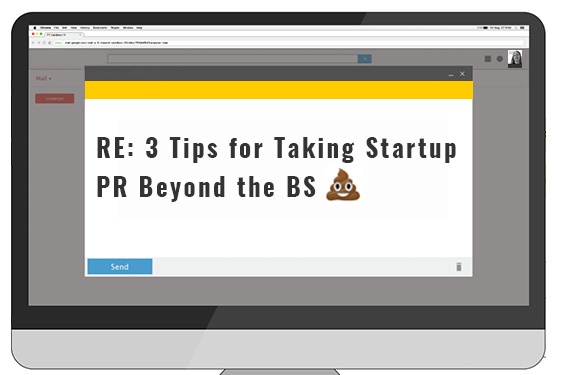3 Tips for Taking Startup PR Beyond the BS
Sep 01, 2016 / By Vanessa Horwell
A new concept making its way into the startup world is “radical candor.” Based on the idea that empty praise provides little value, organizations that embrace radical candor use feedback to challenge one another and hold team members accountable for their actions. The aim is not to be critical, but to encourage honesty over niceness – all in pursuit of fostering both personal and organizational improvement.
Radical candor (or as some call it, “front stabbing”) is making waves as a strategy for enhancing internal communication and performance. But while “radical candor” may be infiltrating entrepreneurs’ mindsets, it’s certainly not infiltrating their startups' public relations efforts.
Even though today’s most innovative early-stage companies openly tout their organizations’ commitment to transparency and data-driven transformation, much of what constitutes startup PR still falls under the umbrellas of ‘pixie dust’ and, yes, empty praise.
Freshly-launched companies look to PR to help them win visibility and maximize interest in their businesses, but much of what they have to say to the media about their companies and their products/solutions – especially early on in the lifecycle of their businesses – is simply BS. In fact, that’s why so many startup PR campaigns fail: As the digital media ecosystem has expanded, more and more members of the media have grown sick of the “fluffy stuff” that has so long populated the PR field.
Of course, public relations is by nature designed to paint a flattering portrait of a brand or entity in the eyes of the media and the public. But especially when it comes from early-stage companies with no brand reputations to back up their media outreach efforts, journalists ignore ‘BS PR’ in favor of more compelling (and candid) content.
While PR may never be the avenue for ‘radically,’ 'front stabbing’-ly honest takes on startups’ business issues, a little extra candor can go a long way toward captivating the media’s attention. Here are three ways startups, especially in business-to-business (B2B) sectors, can take their PR efforts beyond the basic BS that business reporters always ignore.
Lead With the Problem (and How Your Startup Solves It)
Many startups lead with their “disruption” foot first, going to market (and to media) with bold claims that they’re leading the charge to innovate their markets or drive forward “the future of” their industries. What can get lost along the way, however, is the issue of why those markets need to be innovated… or of what’s wrong with the present of those industries.
At the heart of every startup is a desire to solve a problem, create an opportunity, or improve a process for the audience it serves. To win the interest of the media, startups – first and foremost – should share what the problem, opportunity, or process in their sector really is and why their team is best equipped to change it.
Embrace and Expose the Reality of Your Challenges
Now that being entrepreneur is so cool that that the quintessential 'startup guy' can earn his own summer fashion line, some of the hardship of #startuplife falls secondary to the ‘slickness’ factor of culture-first companies, open-air offices, and ‘lean’ thinking. But in reality, raising capital, launching a product, and scaling a business is very, very difficult stuff – and being candid about those challenges can help startups stand out.
We’re not saying every startup should publicly discuss how hard it is for them to win new clients or how overwhelmed their team is. But presenting a sophisticated image that acknowledges the difficulty of breaking through the existing barriers of a given market can boost startups’ potential for attracting earned media coverage.
Think Business-First When it Comes to Media
Many startups – regardless of their niche business focus – want splashy attention from large tech media outlets like VentureBeat, TechCrunch, and Mashable to accompany their product launches or news announcements. But for B2B startups especially, vanity mentions on consumer-tech websites provide little value, since they’re rarely read by the stakeholders who matter to them.
More targeted, trade-focused PR efforts and analyst outreach initiatives can deliver greater value to startups when it comes to their ultimate goal: Growing their margins. And that’s the real key to PR – putting the potential for actual business outcomes (partnerships, investor interest, new clients) ahead of splashy, and largely meaningless, pixie-dust media wins.
For more information on making your PR strategy more candid, contact ThinkInk PR.
Sign up for our insights on the convergence of business and PR





